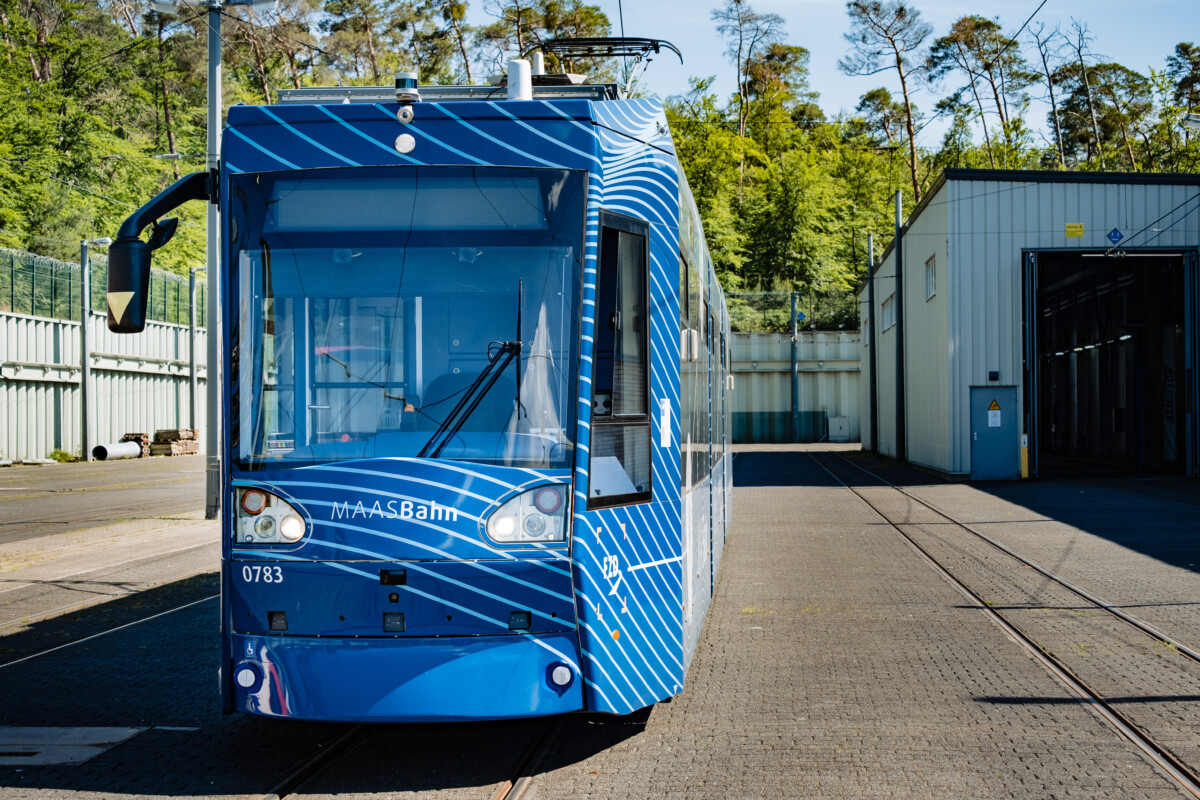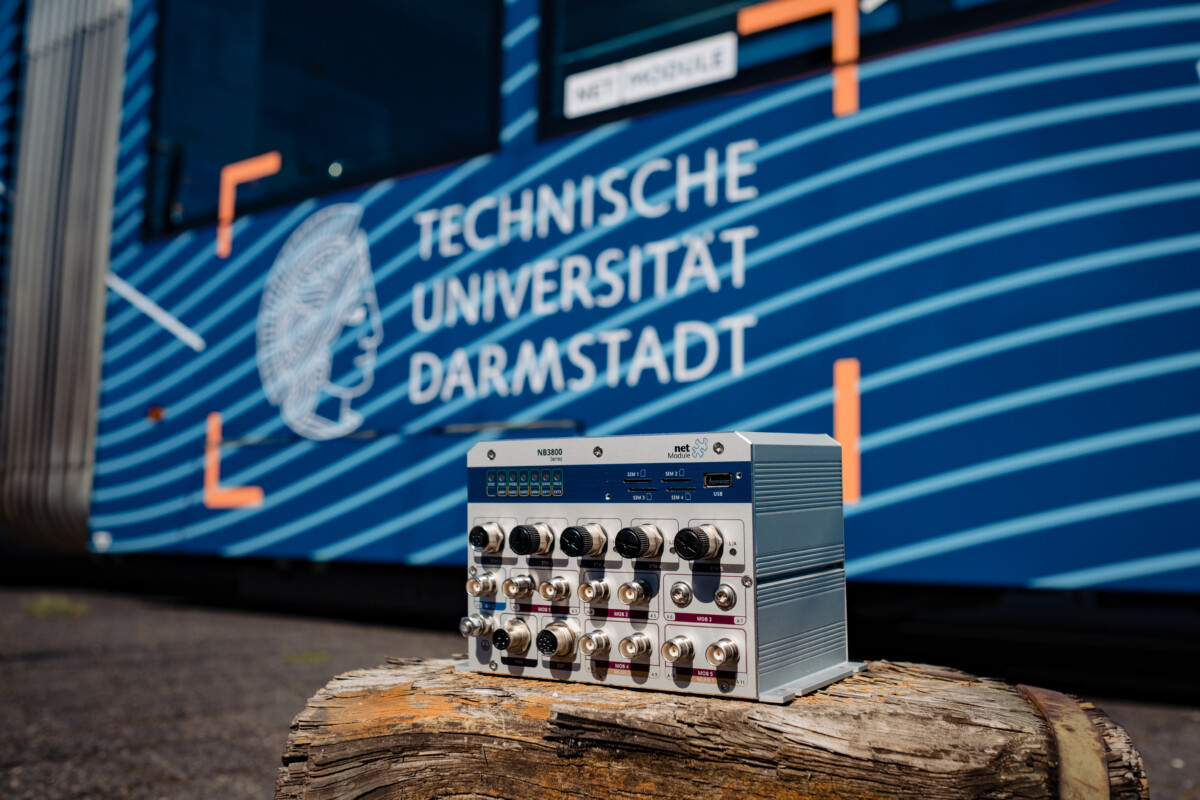Digitalisation and automation are not only finding their way into passenger vehicles, but also into public transportation. The main interest here is how the digital transformation can contribute to resource efficiency and improvements in the operational process, and how the service for customers can be improved.
Since the end of 2017, the TU Darmstadt's Department of Vehicle Technology has been researching automated and teleoperated driving of trams in cooperation with the local public transport company HEAG mobilio GmbH.
With its routers, NetModule provides the necessary devices for connectivity between the rail vehicle of the tram and the corresponding cloud applications.

The MAAS research project
The feasibility study on automation and assistance systems in trams (MAAS) is investigating, among other things, which technologies from other fields such as the motor vehicle sector can be transferred to tram operation. The possibilities of automated driving are being analysed as well as teleoperation - i.e. remote control of the tram. In order to control the trams remotely from a computer, a wide variety of camera data is required, among other things, which must be transmitted to the teleoperation station, and from this station, as well as control commands from it back to the tram. For the evaluation, a wide range of environment detection is used by means of radar, lidar, ultrasonic sensors as well as stereo wide-angle and IR cameras. These enormous amounts of data are transmitted to the control centre by means of a mobile radio connection, which must take place in near real time. The current mobile radio standard LTE (4G) will reach its limits here in the medium term, as too many users access the capacities of a radio cell in conurbations and latencies can pose a danger. NetModule has provided the TU Darmstadt with its NB3800 5G router in order to be able to carry out their research project with the latest mobile radio standard. 5G technology makes it possible to transmit very large amounts of data, in this case HD image material, within milliseconds while keeping latency to a minimum.
Future-proof with 5G
Since the NB3800 with LTE from NetModule has been successfully used in the MAAS project for several years, it was obvious to use the NB3800 5G for the evaluation.
The 5G router was installed in the same place as the identical 4G router in the interior of the MAAS tram and connected to an antenna (Sencity Rail MIMO) already installed on the roof. This antenna covers the 3.7 GHz frequency range for 5G and has already been used in conjunction with the NB3800 with LTE. This shows the investment security of the NetModule individual components and installations when they can be operated with both LTE and 5G.
Another plus: For the NB3800 in LTE operation, some scripts had already been created beforehand that allow information such as signal strengths, service type, frequency band used and calculated data rates to be output. These scripts could also be used in the NB3800 5G without further adaptations.

Conclusion
As with the NB3800 LTE, the MAAS project was also able to establish a reliable connection between the test vehicle and the control centre with the NB3800 5G. Thanks to the reusable scripts in the routers, it was possible to investigate mobile radio quality along the Darmstadt tram network for both networks. The measurements showed that considerable local, but also temporal differences in the available data rates could be seen. Since the 5G network in Darmstadt is based on a non-standalone (NSA) network, the upload rates were satisfactory but still too low compared to the LTE network. In the future, a standalone 5G network (SA) must be used. The NB3800 5G also supports this. Basically, it can be stated that the current LTE networks in expansion areas with good network coverage offer high data rates that also enable teleoperated driving. The tests have also shown that NetModule technology provides investment security in a rail vehicle. Even when operating in different networks, only the routers had to be removed or installed. Cabling, antennas and thus also essential topics in vehicle construction that are responsible for approval and fire protection did not have to be replaced.
Future view
Automated trams and other rail vehicles offer many opportunities in the future. The practical benefits of automation and teleoperation can be in many areas. In the long term, it is conceivable that automated trams with teleoperated support will take over journeys at night. In this way, local public transport services can also be expanded economically in peripheral areas. Another benefit lies in anticipatory driving. Here, intelligent driving control can be used to influence the switching of light signals along the route. The resulting lower braking and acceleration requirements will reduce wear and improve traffic flow. Collision prevention and emergency braking assistance systems would offer added safety. To be able to implement all this, extremely fast data communication is necessary, which the NB3800 5G offers.

For the full evaluation report of the MAAS project, please contact marketing@groups.netmodule.com.
(Source: Evaluation des NetModule NB3850 im Projekt MAAS, M.Sc. Patrick Pintscher, FZD, TU Darmstadt)
